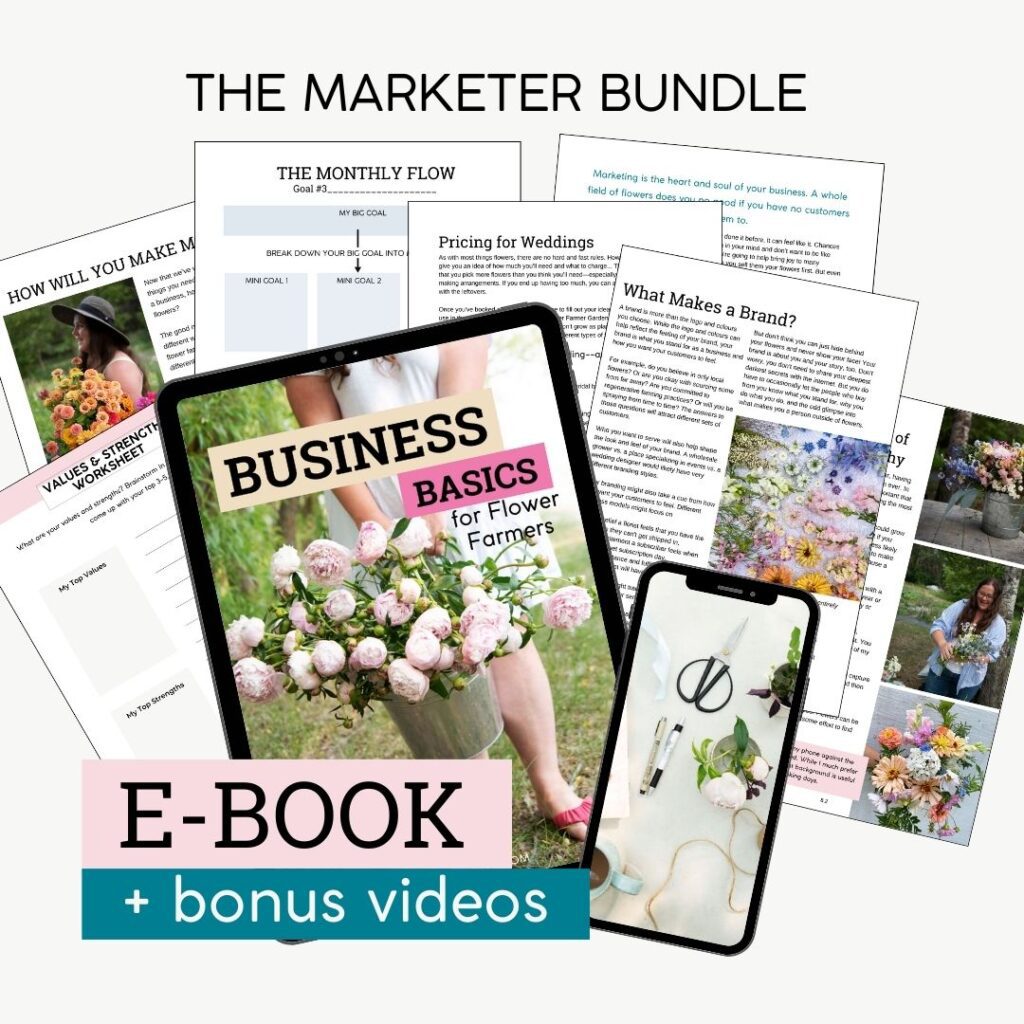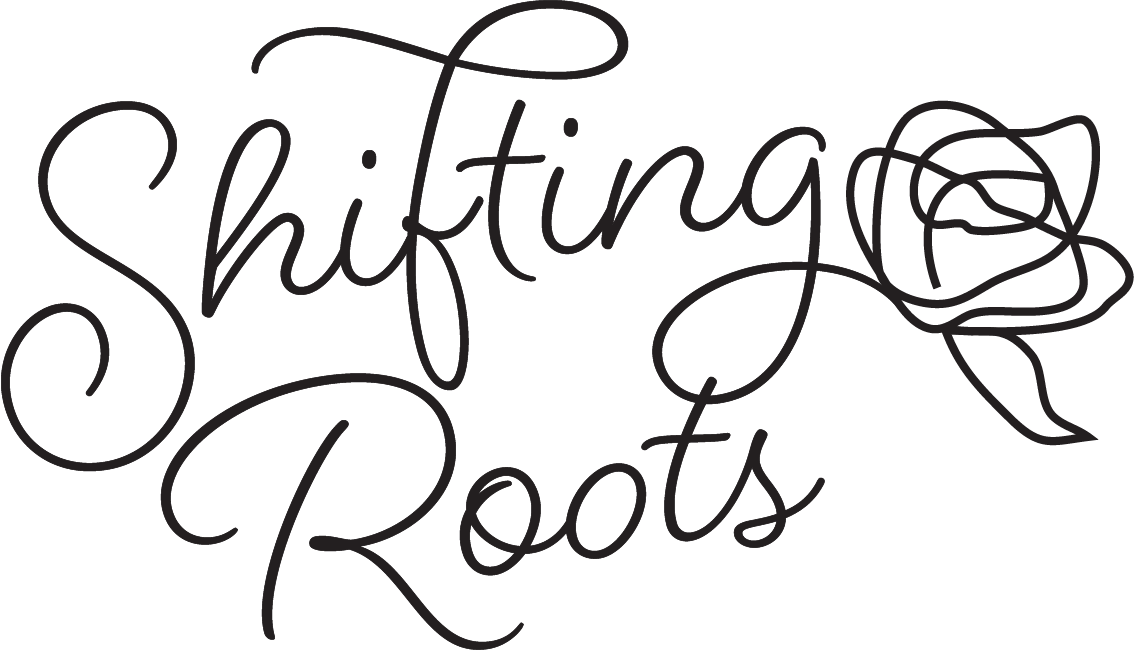Go to any flower farming Facebook group, and you’ll be inundated with questions about pricing cut flowers from new flower farmers afraid to charge what their flowers are worth. I understand the money mindset, gymnastics, and sticker shock that comes when you first start selling flowers. While there is no one-size-fits-all formula for pricing flowers, it’s important that you understand the industry standards so that you can fit yourself in accordingly.
Understanding wholesale and retail prices is crucial if you want to operate a successful flower farming business. Whether you’re just starting out or have been doing this for a while, knowing the difference between these two pricing models can significantly affect your bottom line. If you’re reading this post, chances are you want to run a flower farm as a business and not a hobby, and understanding wholesale and retail prices is the first step toward making a profit! Let’s get into it!

Wholesale Pricing vs Retail Pricing
Wholesale pricing is basically what you would sell your stems for if you were selling to a florist or a flower market (not a farmer’s market but a professional flower market). These prices can sometimes be hard to find, but if you Google hard enough, you can usually get some decent guidelines.
The quality of your flowers also determines your wholesale price. If your quality is very high, you can get your full wholesale price or more, depending on the circumstances. If your flower quality is lower, you probably shouldn’t be selling those flowers wholesale, or if you are selling them, you should sell them at a reduced rate.
Retail pricing is the percentage you charge above the wholesale price. This price ensures you get paid for your time, watering, seeds, electricity, and any other associated costs. As my one friend says, “Every time you touch a flower, that’s money” (shout out to All Dahlia’d Up Flower Farm in Alaska).

knowing What your market can bear
If you’re selling in a very urban area, you’re probably able to have a higher markup than if you’re selling in a rural space where people grow things similar to what you’re growing or people’s jobs are not as high paying. It’s worth knowing the levels of disposable income in your area, and sometimes it might even be helpful if your area has one main employer to know when their payday is, as that could greatly affect your sales!
The amount of markup for your retail pricing depends on the situation. If you’re at a farmer’s market, you might only charge 2, 2 and a half, or 3 times the price, depending on what your market will bear. For weddings, the markup is normally 4 or 5 times the wholesale. Some flower farmers do different formulas, such as 3 times the markup plus a 25% labour fee. I do a straight markup because the math is easier, but you need to keep track of your costs and see if doing it that way benefits your profit. If not, you may need to switch to using formulas.

not all flowers are charged equally
Typically, hero flowers, like ranunculus, sunflowers, dahlias, and peonies, are all at a higher wholesale price than, say, feverfew or statice. When I first started out, I would attach a very simple pricing structure to my flowers. I would have $1.00, $2.00, and $3.00 flowers. Then, I kind of divided up my garden by which stems were greens, fillers, and heroes. For example, stems of feverfew were $1.00, snapdragons and large zinnias were $2.00, and peonies and sunflowers were $3.00. However, prices have gone up substantially since I started in 2021! So those numbers may need some adjustment.
If you’re in a community where everyone grows their own flowers, you won’t get as good of a price if they sell what you grow. That being said, if you grow a special flower that no one else has, that, of course, commands a higher price. For example, a normal zinnia might be $1.00-$1.25 dollar a stem, but a Floret stem might be $2.00-$2.50 (which is why I ordered her newly developed varieties this year for my garden!). With sunflowers, there are three levels: the cheap branching sunflowers that you might only charge $1.00-$2.00 a stem wholesale, the pro-cut sunflowers designed for florists that would go for $3.00 a stem, and the new Sunflower Steve varieties, which would probably be $4.00 per stem.
If you grow for U-pick events, you wouldn’t have a reason to get the special expensive varieties because, typically, people jam their jars as full as they can at these events! At my own events in the past, if I had counted what everybody picked versus what everyone was paying, I know that everyone who attended got a deal.
If you decide to grow the fancier varieties, I would cut them separately and have a different price for them to account for the loss.
For someone who does a lot of wedding work or sells to florists who do a lot of wedding work, it would make sense to grow all of these special wedding-specific varieties that Floret just came out with. If your customers are florists who arrange for premium weddings, you’ll have no trouble selling them, but if you’re in an area where people don’t value those flowers, spending all that extra money won’t make sense!

Have any questions about pricing bouquets? Let me know in the comments!
If you liked this blog post, find me on Facebook, TikTok, and Instagram to follow more of my farmer florist journey and join in the cut flower conversation! I also make weekly videos on my YouTube channel. You can also sign up for bouquet-making events and buy my flowers at my sister site Shifting Blooms. I hope to see you there!
WANT TO START YOUR OWN CUT FLOWER BUSINESS?
Marketing is the core of a successful flower-farming business. This bundle will teach you the basics of running the back end of your business, targeting your ideal customer, making money as a flower farmer, pricing your work, standing out from the competition, and so much more! Plus, at the end, we bring it all together and show you how to make your own plan that you can easily implement–so you don’t forget about your main goals as the days and months slip by!




Join the conversation